Applied Anatomy and Physiology- Test 4
1/236
Earn XP
Description and Tags
nervous system
Name | Mastery | Learn | Test | Matching | Spaced |
|---|
No study sessions yet.
237 Terms
Central nervous system contains
-cerebral hemisphere and contents
-brainstem
-spinal cord
Peripheral nervous system contains
cranial nerves
spinal nerves
ganglia just outside the brainstem and spinal cord
ganglia
cluster of nerves
cranial nerve
nerves that emerge from brainstem
spinal nerves
nerves that emerge from spinal cord
What is gray matter made up of
cell bodies
what does gray matter comprise
outer 1/8 inch of brain (cortex region)
clusters of cell bodies are called (under gray matter)
nuclei
white matter is
myelinated axons
what are the different names for bundled axons
and what do they do
tracts
fasciculi
lemnisci
they connect different regions of gray matter
What are ganglia and where are they located
clusters of cell bodies outside of the CNS
they are located in the PNS
Dorsal and Ventral above brainstem
dorsal (toward top)
ventral (toward bottom)
dorsal and ventral below brainstem
a-p and ventral-dorsal are the same planes in sagittal view
Efferent applications
flow of information from the brain to muscles (motor function)
sending/output of information to a nucleus from another nucleus within CNS
Afferent applications
flow of information for sensation- from body to brain (sensory function)
reception/ input of information by a nucleus from another nucleus within CNS
Longitudinal cerebral fissure separates
the 2 hemispheres
convoluted surface
gyri
sulci
fissures
gyri
ridges
sulci
depressions
fissures
deep depressions
fissure of Rolando separates
frontal lobe from rest of hemisphere
fissure of Sylvius separates
temporal lobe from rest of hemisphere
corpus callosum
connects the 2 hemispheres
frontal lobe bounded by
central fissure posteriorly and sylvian fissure inferiorly
frontal lobe contains
primary motor cortex
broca’s area
premotor & supplementary motor areas
primary motor cortex arrangement
homunculus
homunculus
body parts drawn proportional to amount of neural tissue devoted to that part
broca’s area
speech motor programmer
premotor and supplementary motor areas role
planning motor movements
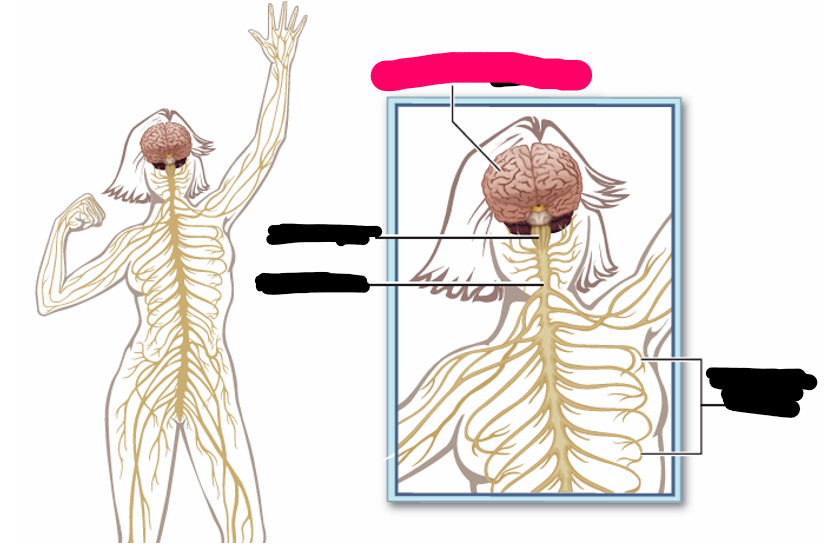
cerebral hemisphere
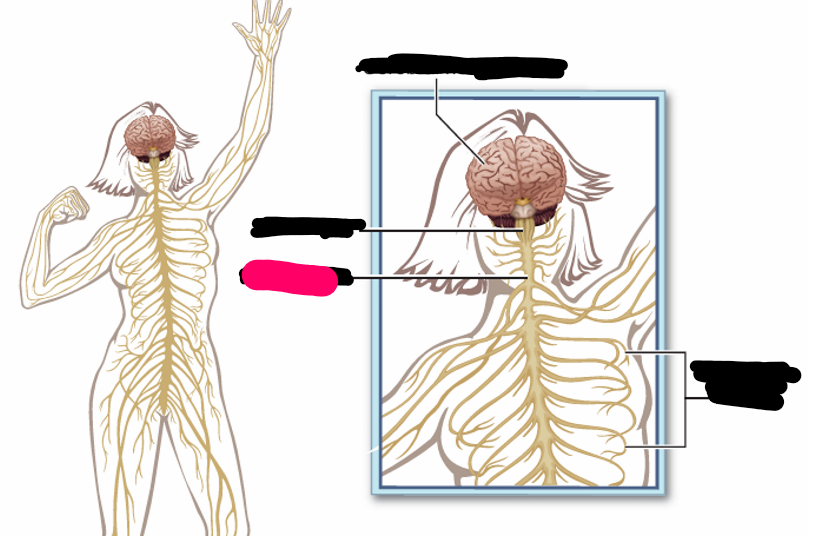
spinal cord
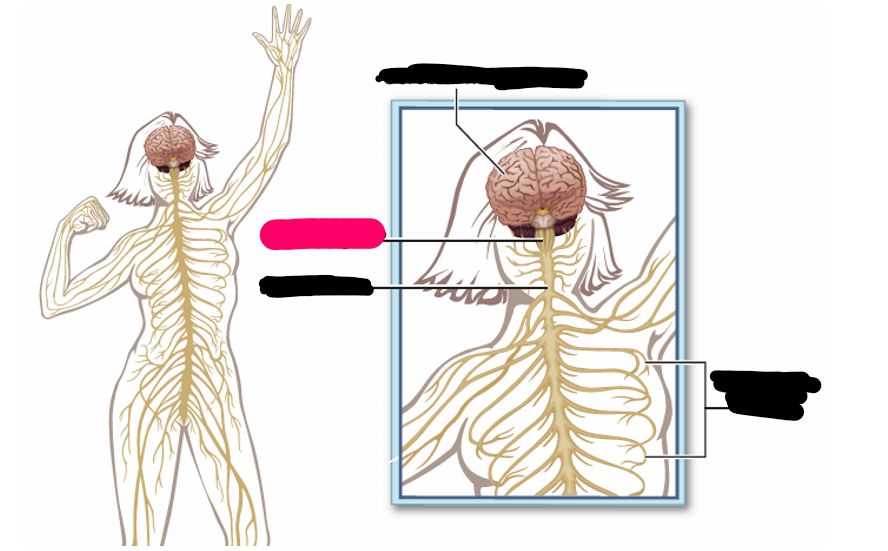
brain stem

peripheral nerves
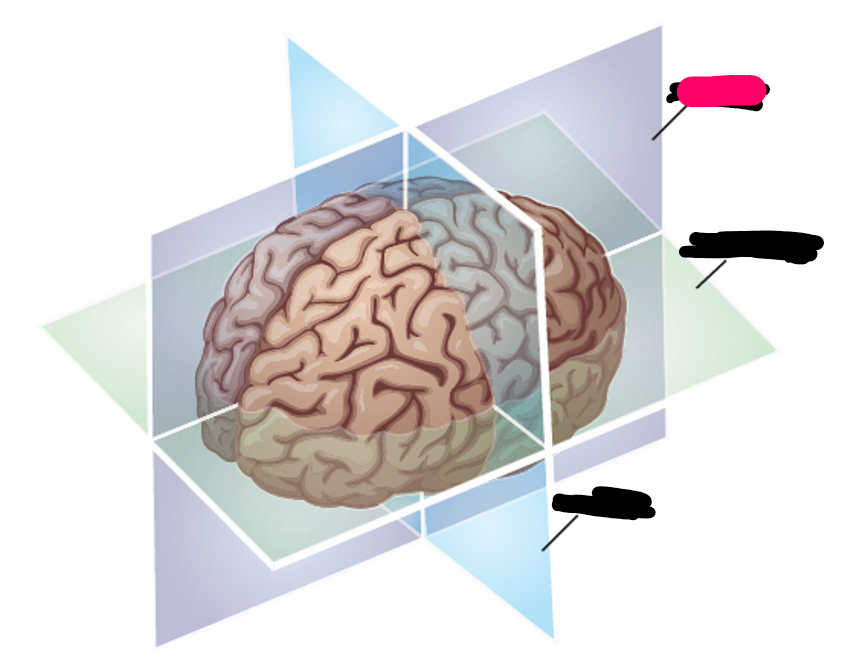
sagittal
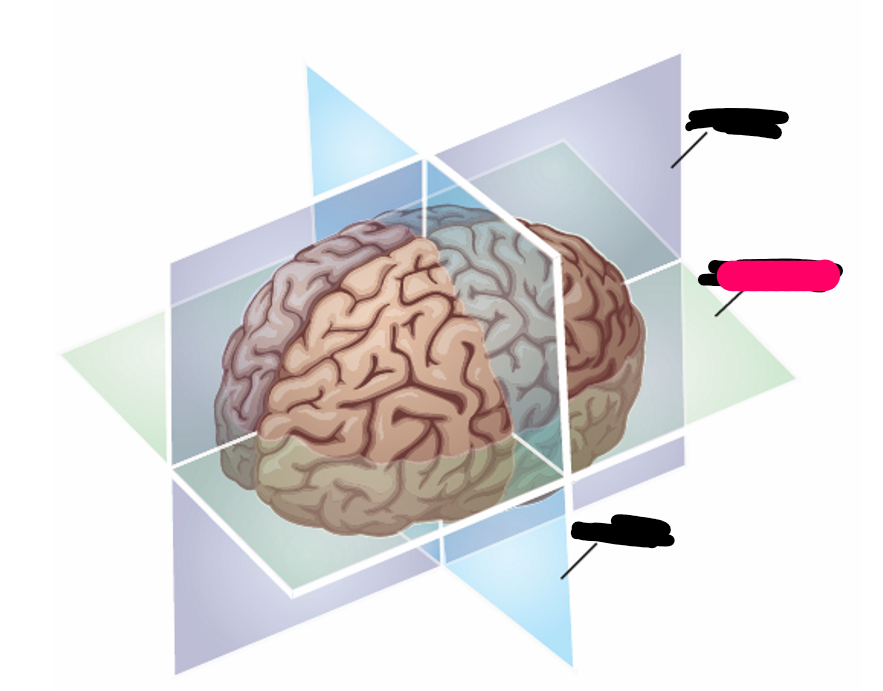
horizontal/ transverse
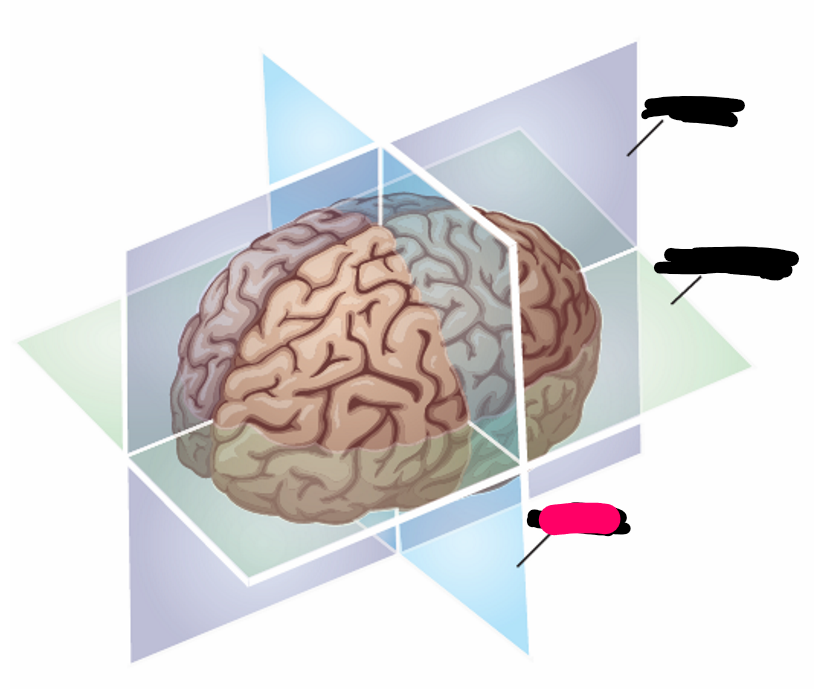
coronal
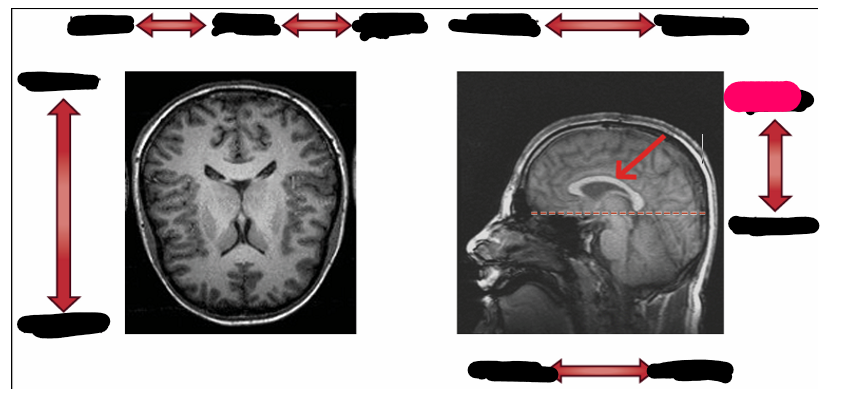
dorsal

ventral

ventral
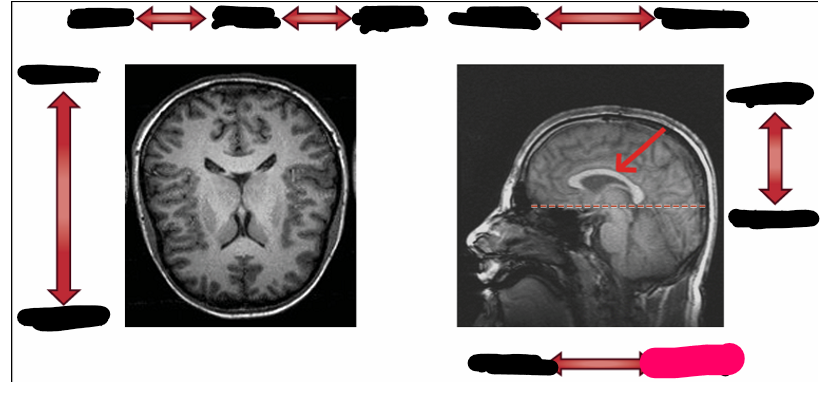
dorsal

longitudinal fissure
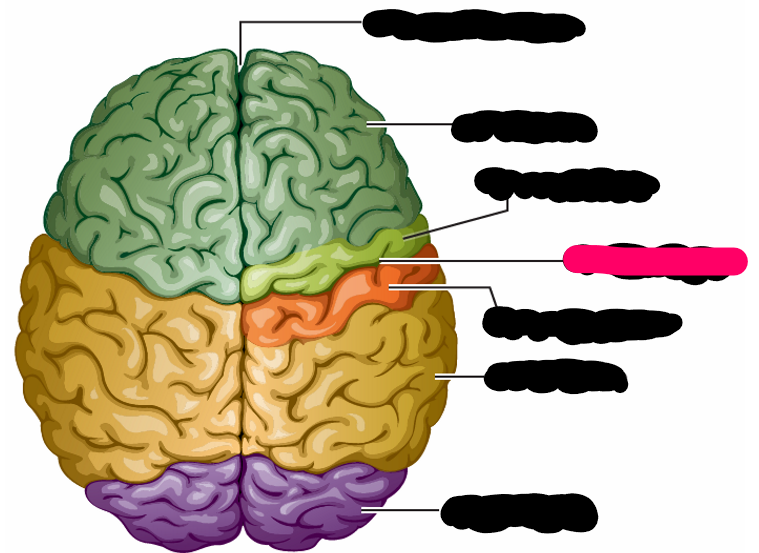
central fissure
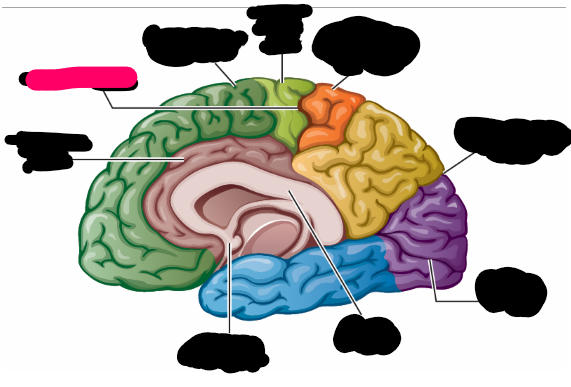
central fissure
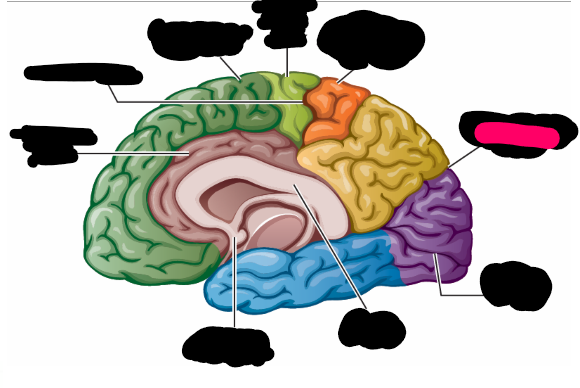
parieto-occipital fissure
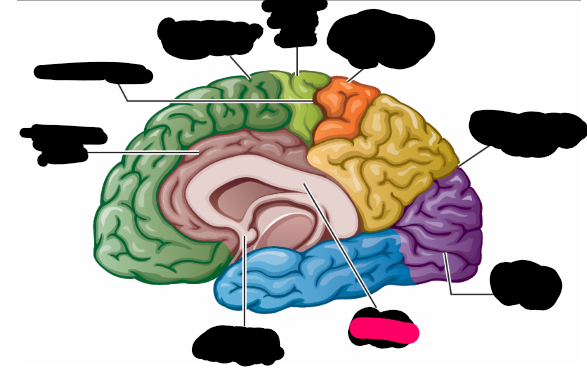
corpus callosum
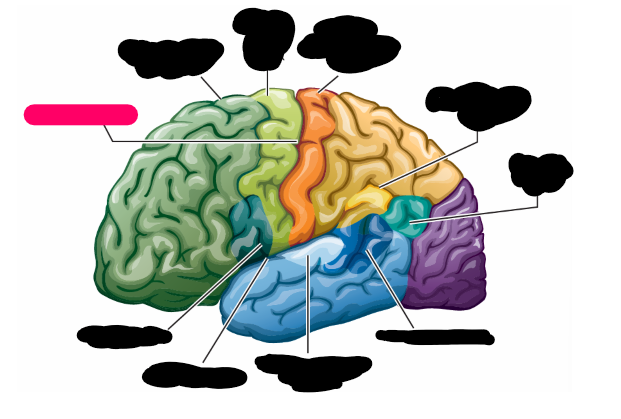
central fissure
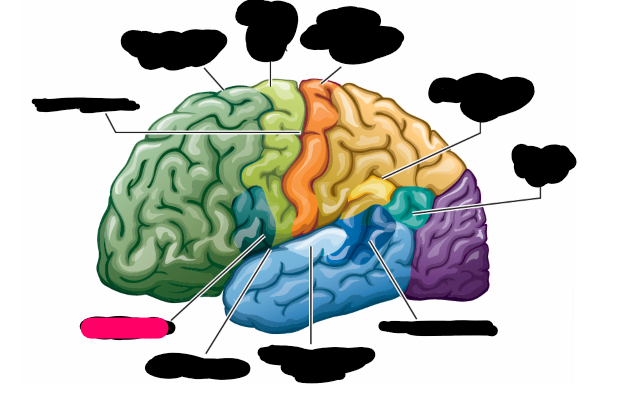
brocas area
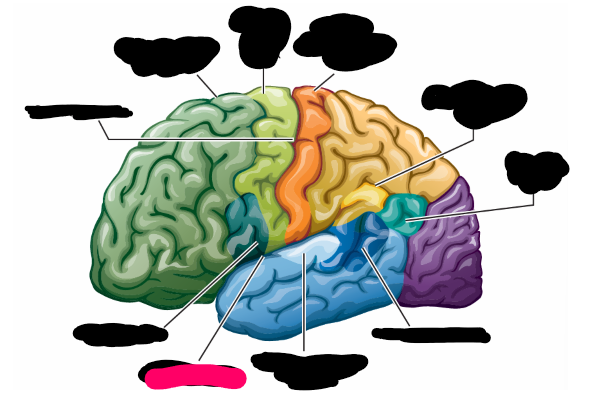
sylvian fissure

supplementary motor area
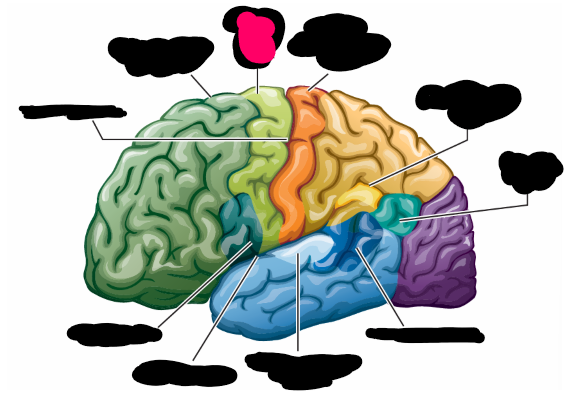
primary motor cortex
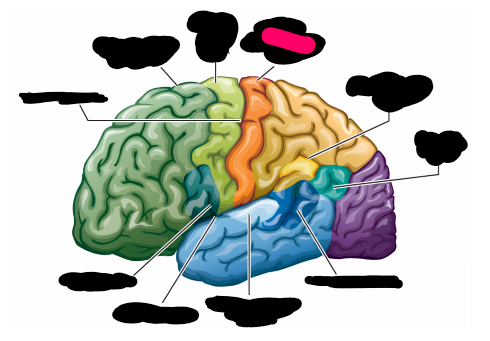
primary somatosensory cortex

supramarginal gyrus
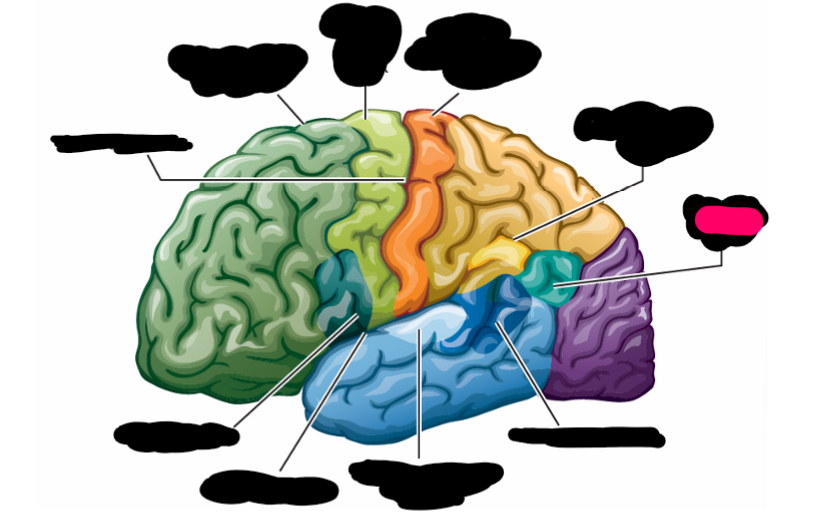
angular gyrus
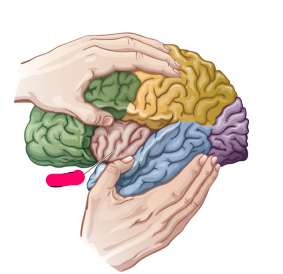
insula
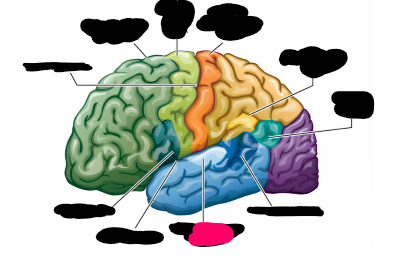
primary auditory cortex

Wernickes area
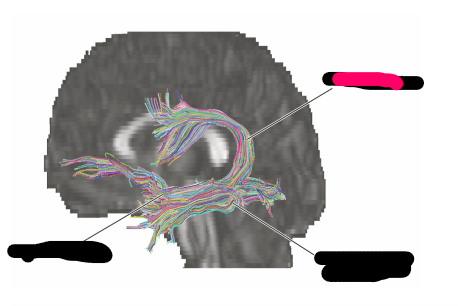
Arcuate fasciculus
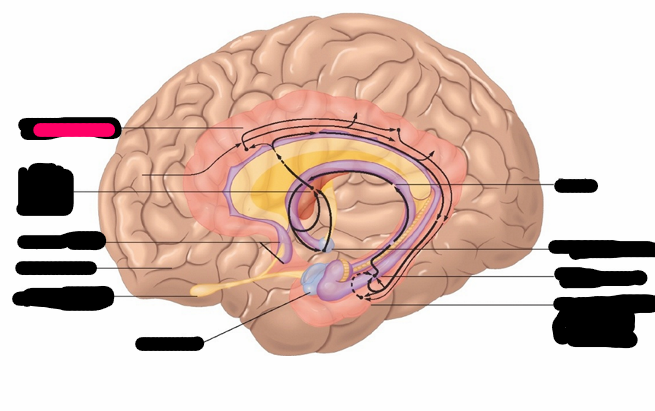
cingulate gyrus

amygdala
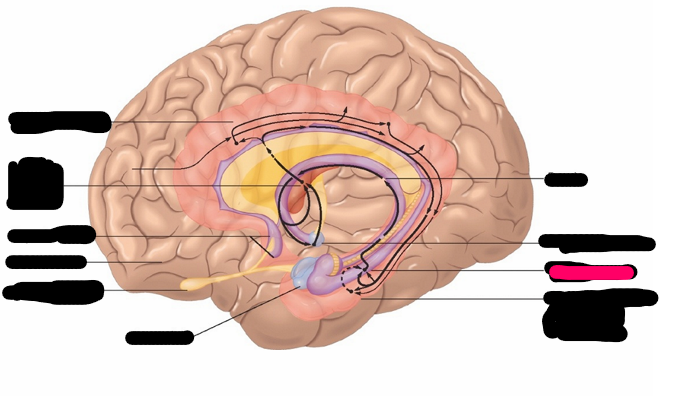
hippocampus
parietal lobe boundings
anteriorly by central fissure and inferiorly by the back of the Sylvian fissure, and posteriorly by the parieto-occipital fissure
parietal lobe contains
somatosensory cortex
angular gyrus
supramarginal gyrus
somatosensory cortex arrangement
homunculus
somatosensory cortex purpose
responds to sensory signals from throughout the body
what does the posterior part of the parietal lobe do
integrates sensory information for perception (like identifying an object by touch)
what does damage to the posterior part of the parietal lobe do
causes agnosia
angular gyrus involvement
high level language (like metaphors)
supramarginal gyrus involvement
word meaning and following commands (like raise hand)
temporal lobe bindings
superiorly by Sylvian fissure and lower parietal lobe. posteriorly by occipital lobe
temporal lobe contents
auditory cortex
Wernicke’s area
auditory cortex job
basic and advanced features of sound are processed, including speech perception
wernicke’s area job
language comprehension center
occipital lobe bindings
superiorly by the posterior parietal lobe. anteriorly by posterior temporal lobe
occipital lobe contents (and its job)
primary visual cortex for basic and advanced processing of visual input
insula location
visible when temporal and parietal lobes are parted
insula role
speech motor control and possibly speech perception
what is the limbic system
a series of structures located within the cerebral hemispheres near the top of the brainstem
selected structures of the limbic system
cingulate gyrus
hippocampus
amygdala
what do the structures of the limbic system do
communicate with reticular formation and higher brain centers to mediate our awareness of sensation and emotion
association tracts service
intra-hemispheric connections for various cortical areas
points of intra-hemispheric connection (association tract)
auditory cortex and wernicke’s
motor cortex and broca’s
arcuate fasciculus extension
from Wernicke’s to Broca’s area
arcuate fasciculus purpose
major link between receptive language area and expressive/speech programming areas
striatal tracts connections
fiber tracts connecting key regions of gray matter/ cortex to key subcortical nuclei such as the basal ganglia and thalamus
striatal tracts communication importance
communication between these areas is critical for speech motor control
commissural tracts communication pathways
communication pathways connecting the 2 hemispheres
corpus collosum in relation to commissural tract
corpus callosum is a large commissural tract
speaking requirements (commissural tracts)
speaking requires communication and processing by both hemispheres (e.g. segmental + suprasegmental information)
descending projection tracts connection
connect primary sensory and motor centers of the cortex to brainstem and spinal cord
descending projection tracts (5)
corticobulbar tracts
corticospinal tract
corticothalamic tract
corona radiata
internal capsule
corticobulbar tracts influence
the cranial nerves
corticothalamic tracts influence
the spinal nerves
corticothalamic tracts connection
connect cortex to thalamus
corona radiata
fan-like formation of projection fibers
internal capsule location
between structures of the basal ganglia (putamen, caudate nucleus) and thalamus
internal capsule converge
fibers of the corona radiata converge and pass through the internal capsule
internal capsule limbs
anterior and posterior
all afferent and efferent fibers from cortex travel through here on way toward brainstem
internal capusles
ascending projection tract structure
similar in structure and arrangement to descending tracts
ascending projection tracts info flow
opposite of the descending tracts